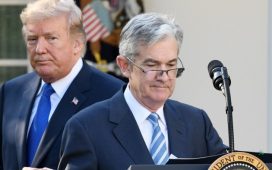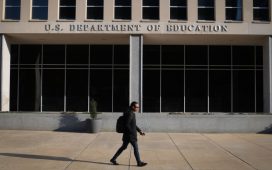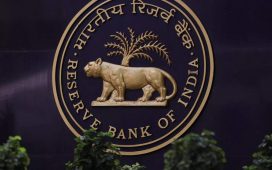Trading in shares in the California lender PacWest has been suspended after their value plummeted by 42% amid wider fears about the health of the US’s regional bank sector.
PacWest had sought to calm markets on Wednesday and said it was in talks with several potential investors after its shares fell by as much as 60%. But the sell-off continued on Thursday and affected other regional banks.
PacWest shares plunged in after-hours trading after Bloomberg News reported that the bank was considering strategic options including a sale or a fundraising round. It is the latest US regional bank to seek a lifeline after First Republic Bank was sold to JP Morgan after talks over the weekend.
The Los Angeles-based PacWest sought to reassure investors by saying it had not experienced out-of-the-ordinary deposit flows. “Recently, the company has been approached by several potential partners and investors – discussions are ongoing,” the bank added.
Investors worry about similarities with Silicon Valley Bank, the tech lender that collapsed in March, such as its ties to the tech community and large uninsured deposits.
Bill Ackman, the chief executive of the New York hedge fund Pershing Square, warned that the entire US regional banking system was at risk. He wrote on Twitter, before PacWest’s statement: “Confidence in a financial institution is built over decades and destroyed in days. As each domino falls, the next weakest bank begins to wobble.
“We are running out of time to fix this problem. How many more unnecessary bank failures do we need to watch before the FDIC [Federal Deposit Insurance Corporation], and our government wake up? We need a systemwide deposit guarantee regime now.”
The regional banking system is at risk. SVB’s depositors’ bad weekend woke up uninsured depositors everywhere. The rapid rise in rates impaired assets and drained deposits. Zeroing out shareholders and bondholders massively increased the banks’ cost of capital. CRE losses loom.…
— Bill Ackman (@BillAckman) May 3, 2023
PacWest said total deposits were $28bn (£22.2bn) as of Tuesday. “Our cash and available liquidity remains solid and exceeded our uninsured deposits,” it said.
Shares in Western Alliance, headquartered in Arizona, tumbled by more than 20% in after-hours trading. It failed to reassure investors by saying it had not experienced unusual deposit outflows. The bank said it had total deposits of $48.8bn as of Tuesday, up from $48.2bn on Monday. As of Tuesday, more than 74% of deposits were insured, the company said.
Other, less well-known regional banks were also hit. Shares in the Dallas-headquartered Comerica and Zions Bancorporation fell by about 10% in after-hours trading and were down again in pre-market trading on Thursday. Unlike in the UK, smaller, regional banks play a much larger role in the American economy, accounting for nearly half of consumer and business lending.
The sell-off came despite reassurances from the US Federal Reserve chair, Jerome Powell, that the country’s banking system remained “sound and resilient”, after the central bank voted to raise interest rates to a 16-year high. The benchmark interest rate now stands at a range of 5% to 5.25%.
after newsletter promotion
On Monday, JP Morgan, America’s biggest bank, stepped in to acquire a majority of First Republic’s assets in a $10.6bn deal after regulators seized the lender, which became the largest US bank failure since the 2008 financial crisis.
It was the second largest collapse in US banking history, beaten only by the 2008 demise of Washington Mutual, which was also sold to JP Morgan.
“You can’t ask JP Morgan to come to the rescue again,” said Neil Wilson, the chief markets analyst at the trading platform Markets.com. He noted that Powell had said: “It’s probably good policy that we don’t want the largest banks doing big acquisitions.”
Wilson added: “No, but that is what happened because it was the ‘best’ outcome for the banking system … The quicker the Fed gets to a point of cutting rates, the better for these midsize banks, but there is a lot more time and likely a lot more pain before we get there.”







